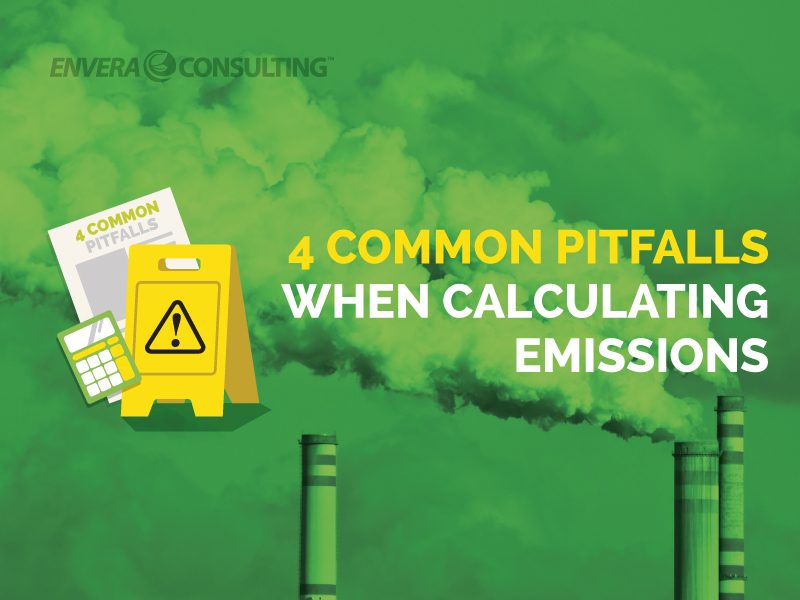

Whether it’s your first or your 100th time doing emission calculations, you’re bound to make a mistake.
The best way to avoid pitfalls is to be made aware of them, so we’ve come up with the four most common calculation snags we’ve experienced.
1. Standard Conditions Are Not Standard
Through our experience in working with different industries, we’ve learned this: Conditions differ from industry to industry. As an example, in chemistry, the International Union of Pure and Applied Chemistry (IUPAC) sets standard temperature and pressure (STP) at 32 degrees Fahrenheit and 1 atmosphere (atm) of pressure, while STP in the petroleum industry is 60°F and 1 atm; other industries have their own standards.
To make things more confusing, there are even differing standards within the South Coast Air Quality Management District‘s regulations. For example, standard conditions in Rule 102 are defined as 60°F and 1 atm. However, in the RECLAIM program, standard conditions are 68°F and 1 atm. With all that in mind, it’s important that you understand what standard conditions you should be using when performing your calculations. Don’t assume that the industry standard is the same as the agency’s regulatory definition of standard.
2. In the SCAQMD, the HHV of Natural Gas Is Not the Same as on Your Gas Bill
As noted on the Department of Energy’s website:
The higher heating value (also known [as] gross calorific value or gross energy) of a fuel is defined as the amount of heat released by a specified quantity (initially at 25°C) once it is combusted and the products have returned to a temperature of 25°C, which takes into account the latent heat of vaporization of water in the combustion products.
The range of higher heating values (HHV) for natural gas varies from 1,000–1020 Btu/scf (British thermal units per standard cubic feet). In the AQMD, however, the default HHV of natural gas is set at 1,050 Btu/scf. So when permitting or otherwise determining compliance with the AQMD’s conditions, be sure to use the default value of 1,050 Btu/scf and not 1,015, the number provided on your gas bill.
3. Emission Factors From a Look-Up Table Are Not Emission Guarantees
Emission factors represent a representative value for emissions from a given source category (e.g., natural gas turbines). The average emissions from a given source type will differ from facility to facility, and even day to day within a single facility, due to equipment loading. That means that natural variations exist between individual sources. Given this natural variability, the use of emission factors for compliance should be used with care.
It’s important to note that emission factors, even the ones found in the EPA’s AP-42 database, are not recommended emission limits or standards; they are averages of past observations and not a guarantee. Since emission factors tend to overestimate emission for a particular source, you should use them with caution.
This can be particularly problematic if the emission factor you select over-estimates emissions, which might require you to purchase more emission-reduction credits than actually needed — or even prevent the equipment from being permitted at all.
Let’s pretend you’re permitting a natural gas-fired boiler, which the AQMD gives a default emission factor of 130 pounds of nitrogen oxide per million standard cubic feet (lbs NOx/MMSCF). Under the BACT (Best Available Control Technology, a pollution-control standard defined in the federal Clean Air Act), the NOx limit for this type of equipment is typically 9 parts per million (PPM), which converts to 11.47 lbs NOx/MMSCF. In this case, the use of a default NOx emission factor would cause the boiler to exceed the BACT limit, which means you’d be denied a permit by the AQMD. Emission guarantees are almost always provided by the manufacturer of the equipment. These values will typically be in a concentration (PPM) that will need to be converted to emission-factor units for use. (This can be done using EPA Method 19 and the dry F factor.)
4. Units Aren’t Canceled Out During an Emission Calculation
The harsh reality is this: You were taught in high school physics to cancel out your units, but you’d be surprised how many people don’t remember, which is probably why mixing up units is one of the most common ways to botch an emission calculation.
When setting up your calculation, be sure to go through the process of canceling out units prior to crunching the final number. This small step can save you tons of time if you need to troubleshoot your calculations in the end.
Also be sure to document all of your data sources, assumptions, and agency communications. When dealing with the AQMD, everything is about documentation. Permit engineers rarely fail to ask detailed questions when processing your permit, and the best way to support your permitting approach is with proper documentation. So keep good notes!